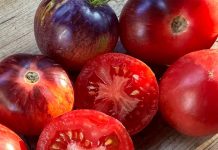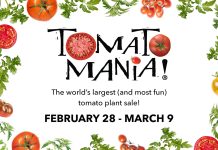
Yesterday was a great day. As we made our way across Idaho, we got to stop at the Potato Museum in the small town of Blackfoot. Before coming to Idaho, I don’t think I had ever seen potatoes growing; but now, I can proudly identify a field of potatoes growing, from a moving car going 65 miles an hour.
I hope the kids took something from it – even if just the idea that what we eat has a history. A history tied to science, world events, and technological advancements.
The museum had great displays – from the origins of potatoes (Peru, 400 B.C.) and how they spread to other countries, to how they are planted, grown and harvested. Old farm equipment and potato sacks, and a looping video enhanced the experience.
Here’s something they never told us in school: Potatoes proved to be more profitable than gold for the Spanish explorers. They brought them to Europe (which is how they eventually made their way to North America.)
In the beginning, people liked the flowers of the potato plant and Marie Antoinette made them fashionable by wearing them in her hair. Blatant life lesson – if you get caught up on the beauty on the surface, you may never unearth the best part of something. Peas would have zero prestige without mashed potatoes. What would Hanukkah be without latkes? Oy! Could Happy Meals really be happy without french fries?
I learned that Idaho potatoes are hand inspected and automatically separated into grade 1 and grade 2. Grade 1 potatoes do not have any imperfections – what you think of as the perfect baked potato. The rejects – the ones that are misshapen or have other visually unpleasing qualities, become french fries or chips. Kind of reminds me of the ugly duckling becoming a beautiful swan.
It is great knowledge to be able to pull out as a parent. If my kids are ever feeling weird or different, I can remind them that perhaps they were meant to be a french fry in a world of baked potatoes.
Speaking of french fries, it was confirmed at the museum – french fries really did come from France. Thomas Jefferson gets the credit for introducing them to the United States. When he served them at an official White House dinner, John Adams thought he was putting on airs, serving “such novelties.” I will remember that next time I have a dinner party. La-dee-da!
The world’s record biggest Pringle in a glass case was pretty cool. The kids could all fit their hands across it, and there was still room.
There was a whole display behind glass of potato mashers through the years, which was a project of an Eagle Scout. Each one was tagged with the make, model, date, and sometimes the price. Now that is definitely a kitchen utensil I will never again take for granted.
Another glass case housed a personal Mr. Potato Head collection that a generous person donated to the museum. Feelings of nostalgia briefly replaced my growing hunger.
I found this fascinating: “Potatoes belong to the same group as tomatoes, tobacco, chili peppers, eggplant and petunias.” It is admirable that a potato is not in a clique. What other vegetable can feel so comfortable in so many different circles? Another life lesson from the humble yet regal root.
Baked, boiled, mashed, or fried, my relationship with the potato has been strengthened as a result of our visit to the museum.
I think that while the kids weren’t as excited as my mom and I were, I think those little tater tots should have a newfound respect for the versatile tuber steeped in history.




